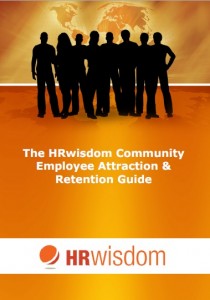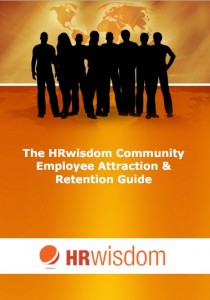What are the attributes of the best employees within organisations?
 Today’s HRwisdom posting comes from HRwisdom expert contributor, Drew Davies.
Today’s HRwisdom posting comes from HRwisdom expert contributor, Drew Davies.
For over sixteen years Drew has been involved in business training, coaching and mentoring programs to leaders at all levels across all industry sectors.
HRwisdom asked Drew about his thoughts on what attributes should be considered when promoting employees within the organisation.
Over to Drew to explain the attributes of the best employees . . .
[dropcap]A[/dropcap] number of years ago I was working with a large timber company on a Quality Assurance project. I found myself having a meal with the Human Resources Manager and the Production Manager and over a fine bottle of red wine we had a discussion about what criteria we use when looking to promote people within an organisation.
Management over the years have looked to the old tried (but not necessarily true) indicators when promoting people from within and organisation, ie:
- Length of service
- Can they do the job
- Level of expertise.
While these may be important, I would like to argue that they are not necessarily particularly accurate indicators of a person’s suitability to take on a supervisory, team leader or management role.
This article is the first in a series that will explore the myths and realities of this exercise which can at times be both frustrating and rewarding…
I believe that the first attribute that should be considered when looking at promoting a person in any organisation is their ATTITUDE.
It was Tom Blandi a French literary theorist and author who in 1907 wrote “Our attitudes control our lives. Attitudes are a secret power working twenty-four hours a day, for good or bad. It is of paramount importance that we know how to harness and control this great force”.
A person’s attitude to work, life, family, friends, the world and others gives those around them an insight into why they do the things they do, and ultimately their character. How they treat their workmates, how they treat you (if you are their boss), and how they respond to their customers and clients. What do they say about your organisation? What sort of words do they use when describing the business?…is it “I”, “they” and “them” or “we” and “us”.
I am not saying that what we should look for is the “Yes” woman or man… someone who agrees out of fear, or some misguided “warm and fuzzy” response. Rather there is a respect and genuineness that sets them apart from their colleagues. They think through the issues and offer balanced and well thought out responses. What I am saying is that by watching a persons attitude will give you a rare insight into what is really important to this individual…and as we all know…attitude rubs off. If this person is going to lead a team, then they need to be someone whose attitude is not changed and blown around by the circumstances they find themselves in. Rather they exhibit one that in spite of what is going on around them they continue moving forward. Their attitude acts as a stabilizer in the “cut and thrust” of modern business practice.
Zig Ziglar well known author and motivational speaker writes “Of all the attitudes we can acquire, surely the attitude of gratitude is the most important and by far the most life-changing.” Interesting and thought provoking words.
If the candidate has the right attitude, then a lot of the other qualities we will be talking about over the next issues will fall into place. The wrong attitude will block them.
Words like humility, self control, gratitude, stickability come to mind. Perhaps a useful exercise for you would be to write down what sort of attitudes would you look for in person who will take a supervisory, team leader or management role… Once you have done that think about what that person would look like if they did not exhibit those qualities. What does the opposite behaviour look like? Could you work with someone who exhibited that opposite behaviour?
To close let me leave with you this quote from Harry F Banks (I cannot find anything about him, but the quote makes sense) “For success, attitude is equally as important as ability.”
Drew Davies
Drew’s passion is to encourage and challenge people to discover and reach for their potential, not just in business but in their whole lives.
For over sixteen years Drew has been involved in business training, coaching and mentoring programs to leaders at all levels across all industry sectors.
You can contact Drew via HRwisdom or by visiting: www.drewdavies.com.au.
HRwisdom
 We have made very rare exception and included a timeless post which does include some rude words (“timeless” meaning this HR tale has been around for many years and we could not find the original source although we are happy to give proper attribution if you know this).
We have made very rare exception and included a timeless post which does include some rude words (“timeless” meaning this HR tale has been around for many years and we could not find the original source although we are happy to give proper attribution if you know this).









